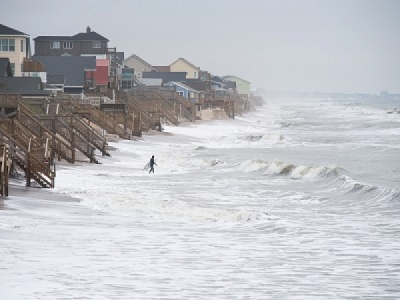
Posted on August 24, 2020
The Topsail Island town of Surf City is looking to finally attain its coveted status as a ‘Corps-engineered beach’ at an estimated cost of nearly $25 million.
Surf City is expected to pay around $24.9 million for its portion of a 52,150-foot berm and dune system to be built by the U.S. Army Corps of Engineers (USACE) from the town’s southern boundary with Topsail Beach to the northern end of Topsail Island.
The projected cost for constructing just shy of 10 miles of dune and berm system is approximately $237 million, according to a letter sent by Town Manager Kyle Breuer to Mayor Doug Medlin. U.S. Congress has already appropriated that money to the USACE, according to Breuer.
That figure will be broken down into financial commitments from the federal government (65%), the state (17.5%), and the towns of Surf City and North Topsail Beach (at a combined 17.5%). North Topsail Beach is expected to contribute $16.6 million.
Breuer emphasized that these are estimated numbers, as the total amounts due will be based on the volume of sand dumped onto the roughly six-mile stretch of beach in Surf City and the 3.9 mile-stretch in North Topsail Beach. The berm and dune line will extend to the southern edge of the Coastal Barrier Resources Act (CBRA) Zone in North Topsail Beach.
“Beach volumes for initial construction are estimated at approximately 12 million cubic yards (MCY), requiring multiple years for initial completion,” Breuer wrote to the mayor.
He said the first phase of the project will start in the winter of 2020 or 2021 at the Surf City-Topsail Beach boundary, proceeding north roughly two miles. The next phases will continue until the project is completed, expected to be sometime in the spring of 2024.
A Project Partnership Agreement (PPA) has established responsibilities of both beach towns, requiring continued coordination between the two throughout construction as well as throughout a 50-year project life — during which time renourishment work will occur at six-year intervals “and funds will be budgeted accordingly,” according to Breuer.
Source: Coastal News Today





